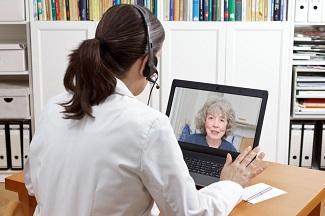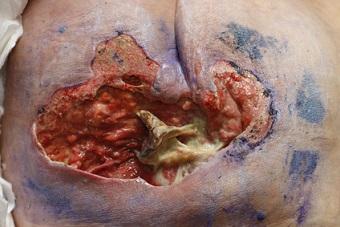Specialty Nursing in a Pandemic: Adapting to Change
May 21, 2020
The novel coronavirus, responsible for the COVID-19 disease, has certainly impacted us all somehow. Whether you work in a hospital setting, an outpatient clinic, a doctor's office, or a specialty setting, this pandemic has altered the lives and careers of all of us in health care.
Adapting During COVID-19
Health care providers have taken an all hands on deck approach, so although we may be specialty nurse providers, we may be called to jump into bedside nursing, screenings, triaging, and assisting our peers as needed. Alternatively, our roles may change in the sense of the way we provide care. For example, many more appointments have been converted to telehealth, video visits, or simply phone calls. We want our patients to stay safe and to stay home whenever possible. Following guidance from the Centers for Disease Control and Prevention (CDC), along with our hospital leaders, roles may continue to change and expand throughout this challenging time. Thinking outside the box, prioritizing, and utilizing technology are definitely important concepts to facilitate wound, ostomy, and continence care during this challenging time.
Prevention and Treatment of Skin Tears in the Elderly Population
Most nurses will agree that adapting to change is important. Nurses adapt to change all the time… new admissions, change in the patient's condition, last-minute discharges, new policies and procedures, new equipment… These are just some broad examples. Nurses are flexible, caring, and genuinely want to help others. We all have our reasons for going into nursing, but many of these reasons center around the mission to help and care for others, those who cannot care for themselves. As we approach the next several weeks and months, adapting to change will be important.
Our patients come first, and we certainly want to ensure they get the care that they need while keeping them safe. Some of us may transition back to bedside nursing, others will help with screenings or triaging, and many will shift practice to non–face-to-face visits utilizing telehealth or video visits, photography, and telephone calls. The Internet and capability for video calling have really expanded and made more convenient the ways in which we provide wound, ostomy, and continence nursing. There are, of course, some limitations. For example, we may need a caregiver or family member present to help with measuring a wound (depending on the location) and assessing for tunneling, undermining, or odor. It is important that we provide education to our patients and their caregivers related to basic wound care nursing concepts before engaging in a video visit.
It is also important to discuss our goals (the patient's and provider's goals) and the limitations of the visit, as well as answer any questions. Another limitation could be that Internet access is lacking, and a phone call will take the place of a video visit. Make sure our patients feel supported. Knowing that their wound specialist is just a phone call away is a comforting thought, especially for those patients lacking support systems.
Conclusion
As the next several weeks and months unfold, and we continue to support one another and our peers, let's continue to remember that we are all in this together. Days may seem frustrating, and not what we signed up for, but take a moment to pause and remember why you went into nursing and the difference that you make every single day. Also, even when masked, always remember to smile… it shows in your eyes! A sincere thank you for everything you are doing.
About the Author
Holly is a board-certified gerontological nurse and advanced practice wound, ostomy, and continence nurse coordinator at The Department of Veterans Affairs Medical Center in Cleveland, Ohio. She has a passion for education, teaching, and our veterans. Holly has been practicing in WOC nursing for approximately six years. She has much experience with the long-term care population and chronic wounds as well as pressure injuries, diabetic ulcers, venous and arterial wounds, surgical wounds, radiation dermatitis, and wounds requiring advanced wound therapy for healing. Holly enjoys teaching new nurses about wound care and, most importantly, pressure injury prevention. She enjoys working with each patient to come up with an individualized plan of care based on their needs and overall medical situation. She values the importance of taking an interprofessional approach with wound care and prevention overall, and involves each member of the health care team as much as possible. She also values the significance of the support of leadership within her facility and the overall impact of great teamwork for positive outcomes.
The views and opinions expressed in this blog are solely those of the author, and do not represent the views of WoundSource, HMP Global, its affiliates, or subsidiary companies.













Follow WoundSource
Tweets by WoundSource